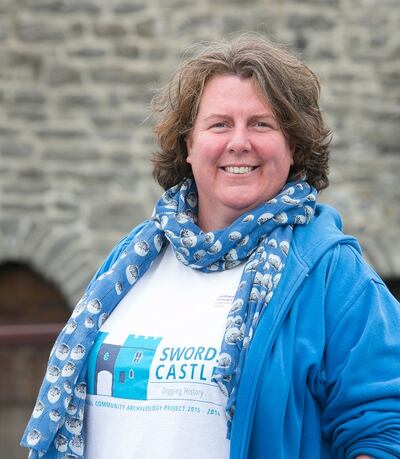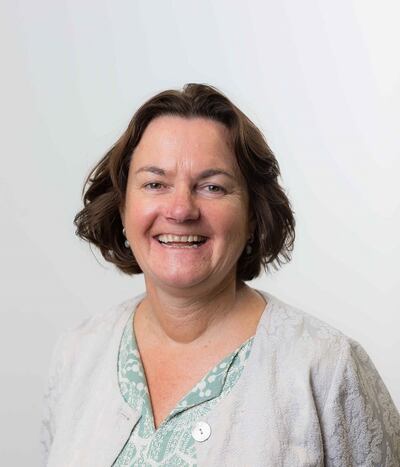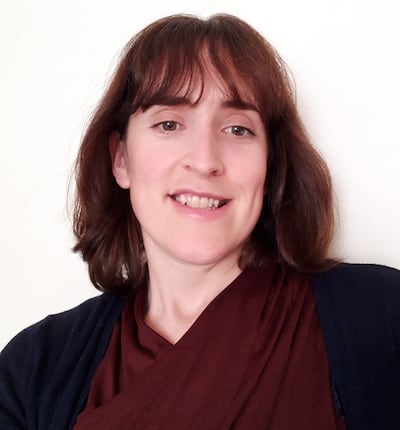Right across the country the Heritage Officer network undertakes Trojan work raising awareness of Ireland’s natural, built and cultural heritage.
Its 29 members provide advice and information on heritage matters, collect data and conduct research on all aspects of heritage, inform and develop heritage policy and promote best practice. They do all this, alone, across an entire county.
The Heritage Council provides part-funding for the officers. At a reception in Áras an Uachtaráin last year, hosted by President Michael D Higgins, to celebrate the 20th anniversary of the Heritage Officer Programme, President Higgins called the Heritage Officer network, “a fantastic resource”.

“The vision is that heritage is valued by all and is at the heart of modern society, identity and well-being,” explains Joe Gallagher, Heritage Officer for Donegal County Council, and chair of the Heritage Officer network.
He has held his position in Donegal for 17 years. Like all Heritage Officers, he is driven by a passion for the promotion of heritage in all its forms. Similarly, he has his own particular specialities. In his case it is built heritage, including the craft and conservation of vernacular architecture.
Here we meet some of his colleagues.
Christine Baker, Heritage Officer, Fingal

Ireland’s newest Heritage Officer, Christine Baker took up the role in February of this year. She’s an old hand however at all things heritage, having spent 13 years as a community archaeologist at Fingal Co Council. Christine studied archaeology at UCD and spent her 18th birthday on a dig at the Ceide Fields, in the 1990s.
Since then there has been an enormous growth in public good will and support for our heritage, she believes, but 2020’s lockdowns raised interest to new levels. “When people were tied to their local area they saw a new appreciation of things like biodiversity in their own gardens, or local monuments, or folklore. People had time to think about it,” says Christine.
Fingal is one of the country’s most diverse local authority regions. For Christine it’s hugely important that heritage isn’t seen as something for older generations only.
“It’s very important to open up heritage to younger generations, whether through the heritage of sport, or fashion, or through things like pop up museums in local schools where you bring in artefacts,” she stresses.
Christine also shares one of Fingal’s flagship heritage projects, the Iron Age fort Drumanagh. The most important Iron Age promontory fort on the east coast of Ireland, Drumanagh sprang to public prominence in the mid-1990s amidst claims of its being ‘a significant Roman beachhead’.
For Christine, such work is more than a job. “It’s a privilege.”
Conor Neligan, Heritage Officer, Cork

Conor Neligan took up his role as Heritage Officer in summer 2011. He studied geography and economics in college, went on to do a masters degree in town planning and, when he took up his current position, undertook a higher diploma in field ecology. It’s reflective of the fact that, as a Heritage Officer, you have to advise across a number of disciplines, from ecology to the built environment to folklore.
That feeds through to the number and variety of projects Heritage Officers promote including, in his case, everything from a garden competition for primary schools to producing a series of books about Cork’s heritage. Each year these cover a different element of the county’s heritage, from bridges to houses to industrial and archaeological heritage.
“Heritage is as much about the future as it is the past,” says Conor. “It’s about taking the knowledge we’ve learned from the past and bringing it forward into the future.”
Heritage is a hugely important component in tourism. “Many people tell me they open one of our books on a Sunday afternoon and say ‘Right, we’ve never seen that, let’s go and visit it!’”
Congella McGuire, Heritage Officer, Clare

Congella McGuire was one of the country’s first Heritage Officers, taking up her role 20 years ago. Prior to that she worked for Ireland’s National Parks and Wildlife Service. Growing up in Clare, as part of an outdoorsy family, the natural world has always held her in its thrall. “Sometimes I don’t feel like I’m at work at all,” she says.
Like all Heritage Officers, the projects she works on span the full heritage spectrum, but it’s no surprise to find that biodiversity is her particular passion. “As a network we are all very different in terms of what we specialise in,” she explains.
“For me, working in the Burren has been a phenomenal part of what I do. It is the jewel in the crown of Ireland’s biodiversity. It is to Ireland what the rain forest is to the world. It holds so much variety, not just of fauna but insects too.”
Right now she is helping communities develop pollinator-friendly spaces in line with the national Pollinator Plan. The biggest heritage risk she sees is the loss of biodiversity. As a child she saw flocks of geese, but she may now only see a single bird. “The younger generation doesn’t know what we used to have,” Congella says.
To safeguard heritage for future generations, awareness is vital. “My job is about working with hearts and minds, and it’s a joy to work with the communities I do.”
Shirley Clerkin, Heritage Officer, Monaghan

Fifteen years on the job and Shirley Clerkin still reckons she has the “best job in the local authority.” Her interest in heritage started long before she took up the position, having previously worked for An Taisce and the Irish Wildlife Trust.
For her heritage is a combination of things, including a sense of place, rootedness and ancestral connection.
It could be cultural, such as a desire to understand a place name and to seek out its geological roots. Or it could be physical, how a rath beside your town sparks an interest in other raths.
“Whatever the trigger, if it happens it develops people’s observational skills, they begin to see habitats and plants when they’re out for a walk. They become like a detective, looking for clues.”
Among the projects she is most proud of supporting is a database of Monaghan’s wetlands, regions that were traditionally undervalued.
The monumental Black Pig’s Dyke, an epic 10km earth works with evidence of Iron and Bronze Age settlements is also of huge significance and, as more is discovered about it, is set to enthral for generations. That’s the thing about heritage, “it’s the gift that keeps giving”, she says.
Melanie McQuade, Heritage Officer, Westmeath

Melanie McQuade was appointed Westmeath’s Heritage Officer three years ago. Before that she was an archaeologist and her most exciting work involved the discovery of 6,000 year old wooden fishing traps from a part of the capital city that was then Dublin Bay.
Heritage is hard to define, quite possibly because it is so entwined in our daily lives, she says. “It can be about a sense of place, that connection to your home place. Or it can be about cultural heritage. People often think about it in terms of buildings but it can be intangibles too, like folk dance.”
It’s dynamic as well. The cassette tapes she grew up listening to music on are now heritage items, she points out. One of the best known projects currently being undertaken in Westmeath relates to local field names at risk of being lost as properties change hands.
Part of the joy of heritage is that it encourages people to get out and about. “There is evidence that getting out and engaging with heritage, particularly the natural heritage, brings wellness benefits,” she says. “In places like Scotland and Japan I’ve heard of doctors prescribing ‘forest therapy’, for example. With so many of us spending so much time online, it’s probably more important than ever.”
Melanie McQuade was appointed Westmeath’s Heritage Officer three years ago. Before that she was an archaeologist and her most exciting work involved the discovery of 6,000 year old wooden fishing traps from a part of the capital city that was then Dublin Bay.
Heritage is hard to define, quite possibly because it is so entwined in our daily lives, she says. “It can be about a sense of place, that connection to your home place. Or it can be about cultural heritage. People often think about it in terms of buildings but it can be intangibles too, like folk dance.”
It’s dynamic as well. The cassette tapes she grew up listening to music on are now heritage items, she points out. One of the best known projects currently being undertaken in Westmeath relates to local field names at risk of being lost as properties change hands.
Part of the joy of heritage is that it encourages people to get out and about. “There is evidence that getting out and engaging with heritage, particularly the natural heritage, brings wellness benefits,” she says. “In places like Scotland and Japan I’ve heard of doctors prescribing ‘forest therapy’, for example. With so many of us spending so much time online, it’s probably more important than ever.”












